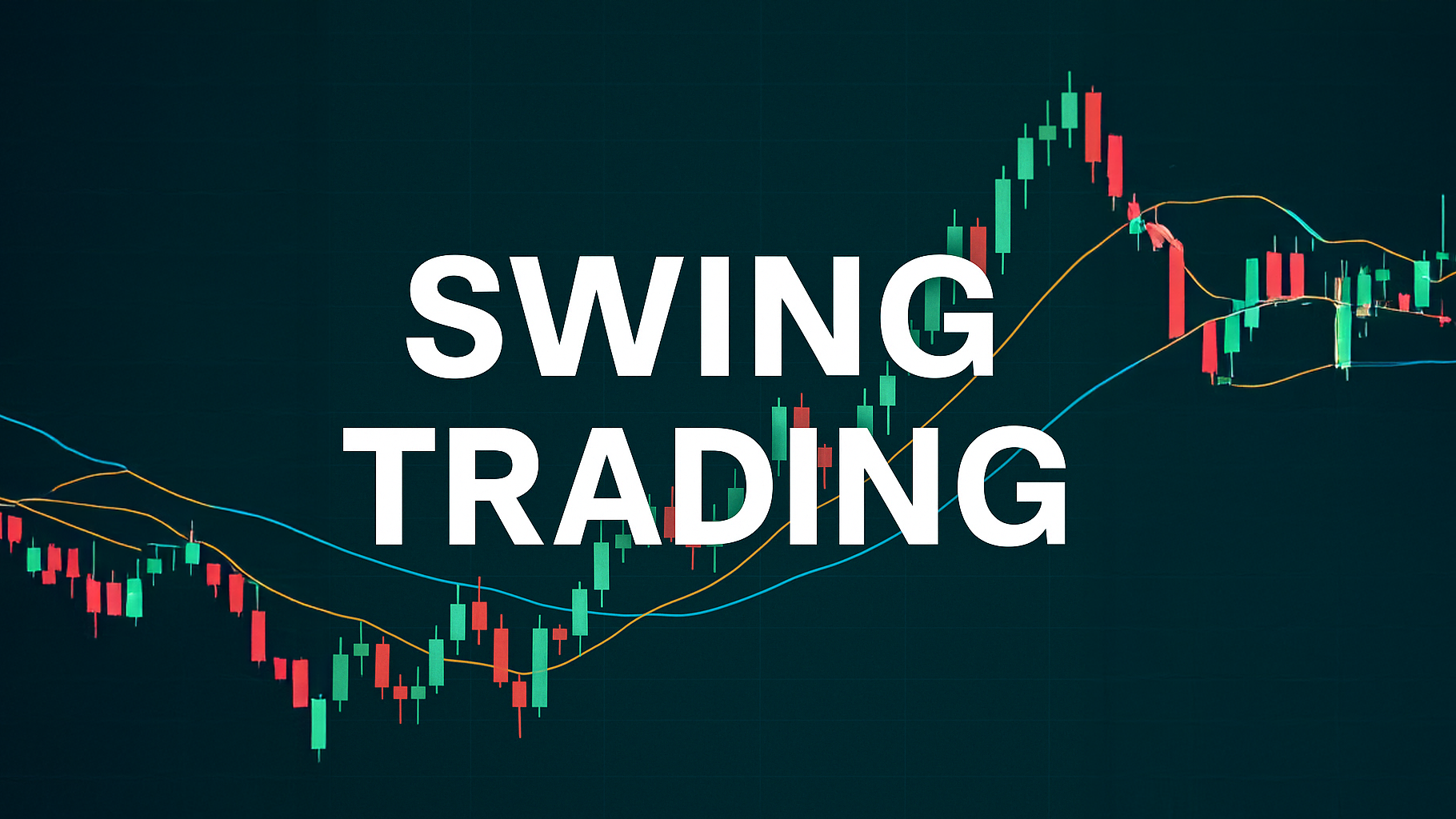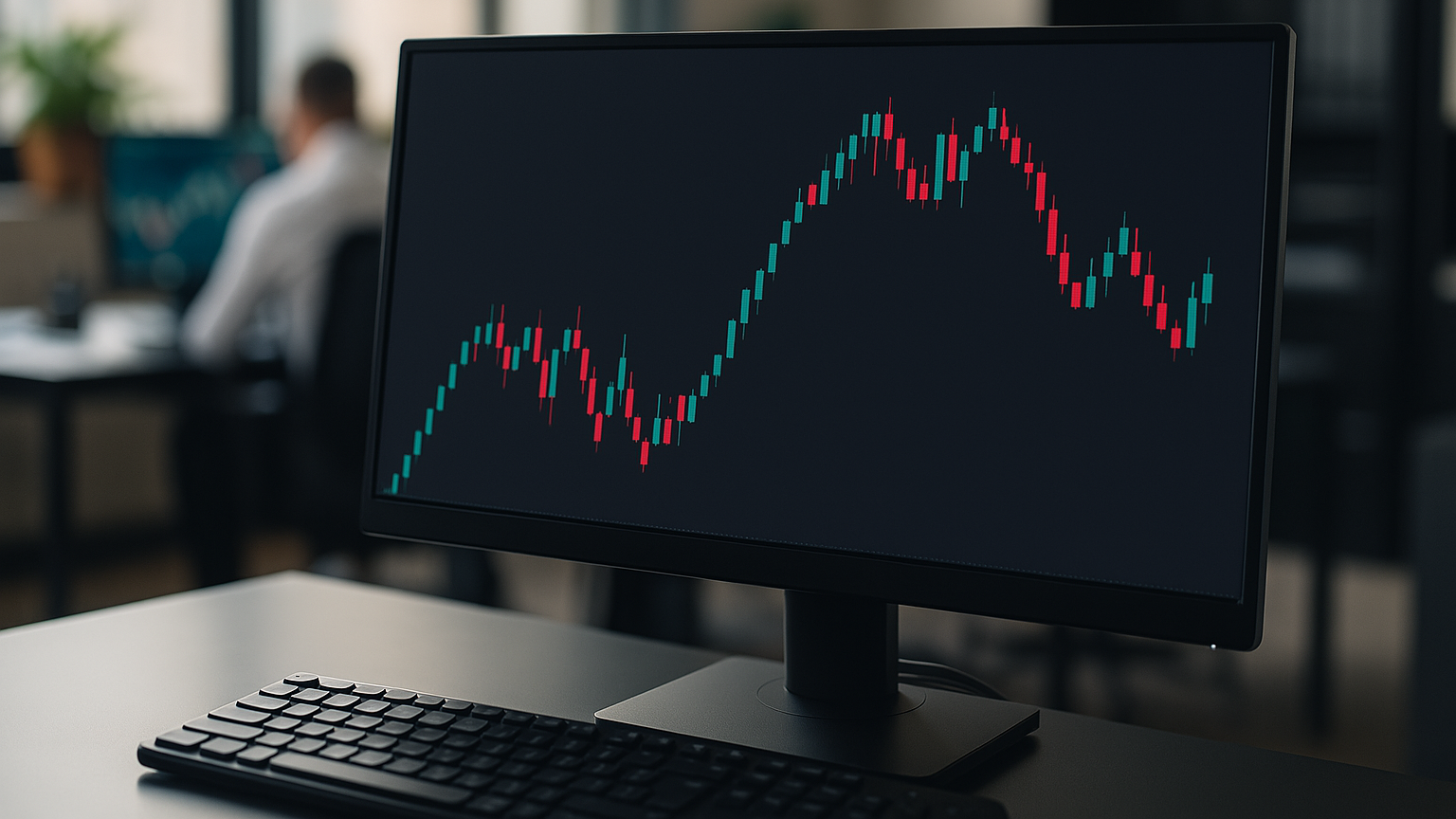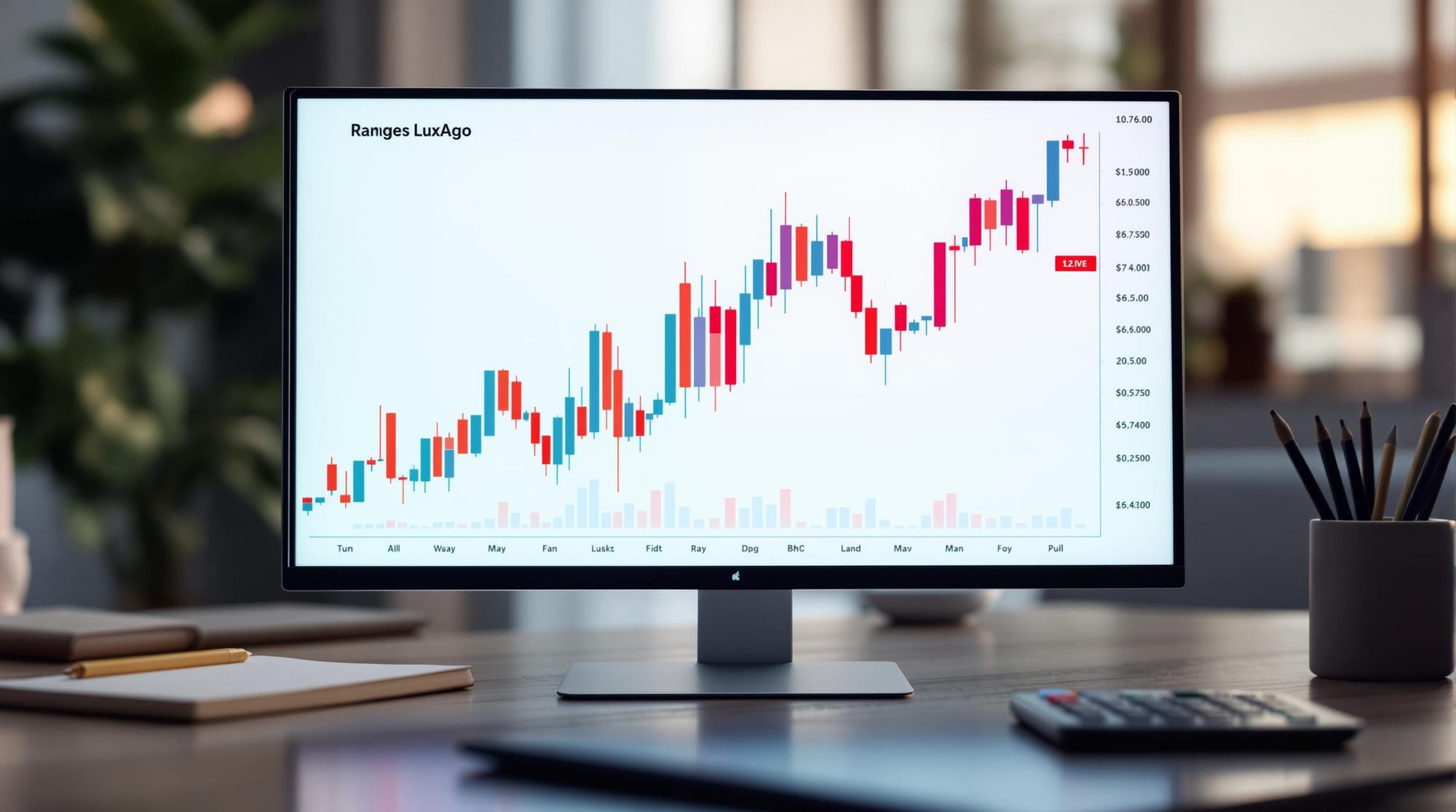Learn how to effectively adjust moving averages in volatile markets using dynamic methods for quicker and more accurate trading signals.
In volatile markets, standard moving averages often lag, leading to delayed or misleading signals. Dynamic moving averages like Variable Moving Average (VMA) and Variable Index Dynamic Average (VIDYA) adjust to market conditions, offering faster, more accurate signals. Here's what you need to know:
-
Why Adjust Moving Averages?
- Standard moving averages struggle in volatile markets.
- Dynamic options like VMA and VIDYA adapt to price changes and filter noise.
-
Key Tools for Volatile Markets:
- VMA: Adjusts using the Chande Momentum Oscillator (CMO).
- VIDYA: Adapts based on standard deviation.
-
Best Period Lengths:
- High volatility: 5-20 days.
- Moderate volatility: 20-50 days.
- Low volatility: 50-200 days.
| Moving Average Type | Volatility Measure | Best Use Case |
|---|---|---|
| VMA | Chande Momentum Oscillator | Quick trend identification in fast markets |
| VIDYA | Standard Deviation | Smooth trend following with minimal lag |
Dynamic moving averages work best when paired with tools like RSI or MACD and platforms like LuxAlgo for backtesting. Adjust settings regularly and use strong risk management practices to stay effective in unpredictable conditions.
Selecting Moving Averages for Volatile Markets

Types of Moving Averages
In volatile markets, picking the right moving average can make all the difference in generating accurate signals. Standard options like Simple Moving Averages (SMAs) and Exponential Moving Averages (EMAs) often lag behind rapid market changes. Dynamic moving averages, however, excel at handling market volatility.
Here are two great choices for such conditions:
- Variable Moving Average (VMA): This type adjusts its smoothing factor based on the Chande Momentum Oscillator (CMO). It reacts quickly to price changes while filtering out unnecessary noise [1].
- Variable Index Dynamic Average (VIDYA): VIDYA uses standard deviation to adapt to market volatility, making it effective for tracking trends smoothly during turbulent periods [1].
| Moving Average Type | How It Adapts to Volatility | Best Use Case |
|---|---|---|
| VMA | Chande Momentum Oscillator | Quick trend identification in fast-changing markets |
| VIDYA | Standard Deviation | Smooth trend following with minimal lag |
Choosing the Right Period Length

The period length you choose for your moving average can heavily influence its performance in volatile markets. Shorter periods (5-20 days) are better suited for quick responses in day and swing trading, while longer periods (50-200 days) work well for confirming trends in more stable conditions [3].
For dynamic moving averages like VMA or VIDYA, start with shorter periods (5-20 days) and tweak them based on the asset's behavior and your trading style [3]. A combined approach can be particularly effective - for example, using a 10-day VMA to spot entry points and a 50-day moving average to confirm broader trends [5].
Using Dynamic Moving Averages in Trading
This section dives into how to set up and use dynamic moving averages like VMA and VIDYA in trading strategies.
Setting Up VMAs and VIDYAs
For VMAs, the Chande Momentum Oscillator (CMO) is the primary tool for measuring volatility. In highly active markets, smoothing factors increase (e.g., 0.15) to respond more quickly. During calmer periods, these factors decrease [1]. For VIDYA, traders tweak parameters based on standard deviation, ensuring the moving average reflects current market conditions [1].
| Moving Average Type | Volatility Measure | Smoothing Factor Range | Best Market Conditions |
|---|---|---|---|
| VMA | CMO | 0.05 - 0.15 | Fast-moving markets |
| VIDYA | Standard Deviation | 0.02 - 0.10 | Moderately volatile markets |
Pairing with Other Indicators
Dynamic moving averages deliver the best results when paired with other technical indicators that offer additional insights and confirm signals.
For example:
- A VMA crossover combined with RSI oversold levels (e.g., below 30) can reinforce bullish signals [3].
- Use VIDYA trend changes alongside MACD crossovers moving in the same direction for added confirmation [5].
Tools like LuxAlgo make it easier to integrate dynamic moving averages with other indicators. Their features, such as custom configurations and backtesting, help traders fine-tune their strategies.
"Dynamic moving averages can provide better trend identification, reduce lag, and adapt to different market conditions when properly combined with complementary indicators" [2].
Advanced Strategies for Moving Averages
Multi-Timeframe Analysis
Using multiple timeframes can improve trading decisions during volatile market conditions. Instead of sticking to a single-period moving average, traders often combine different timeframes to reduce market noise and identify meaningful trend shifts.
For assets prone to volatility, like cryptocurrencies, shorter timeframes work well for active trading. For example, you might use a 4-hour chart to spot overall trend direction, a 1-hour chart for confirmation, and a 15-minute chart to pinpoint entry points. This method allows traders to stay aware of the bigger picture while responding quickly to price changes [4].
Blending moving averages across various timeframes helps traders navigate unpredictable markets more effectively. Let’s now look at how volatility measurements can refine these strategies even further.
Customizing Volatility Metrics
Experienced traders often pair moving averages with tools that measure volatility to improve their effectiveness. Indicators like Bollinger Bands and Keltner Channels are especially useful for adjusting how moving averages respond to changing market conditions [6].
Here’s how traders implement these tools:
- Dynamically tweak smoothing factors using Bollinger Band width to align with market volatility.
- Apply the ATR (Average True Range) multiplier from Keltner Channels to adjust moving average sensitivity during momentum shifts.
- Combine both indicators to cross-check volatility levels and fine-tune moving average settings.
Backtesting these strategies is crucial to find the right balance. The goal is to ensure quick reactions during high-volatility periods without sacrificing stability in quieter markets.
Incorporating Moving Averages into Trading Systems
Using Platforms like LuxAlgo.com
LuxAlgo offers tools that make it easier to set up and customize Variable Moving Averages (VMAs) and adjust volatility metrics to fit market conditions. Crucially, the indicator can be added as an external source to the LuxAlgo Backtester so it can be backtested alongside other strategies — giving traders deeper insights and more data-backed approaches.

Their Oscillator Matrix combines moving averages with momentum indicators, offering clearer entry and exit signals during periods of high volatility. It uses AI-driven analysis to fine-tune parameters based on historical data. If you’re using the Premium tier, you gain access to features like:
- Advanced signal overlays to track moving average crossovers
- Real-time volatility metrics and multi-timeframe analysis for better trend evaluation
After setting up these tools, thorough backtesting is crucial to confirm their performance under different market scenarios.
Backtesting and Risk Management
With the AI Backtesting Assistant from LuxAlgo, you can find great strategies that are already backtested — giving you a solid foundation to build upon as you create new strategies using the VIDYA. This approach allows traders to refine and test systems before moving to live markets.

When analyzing backtesting results, pay attention to these metrics:
| Metric | Description |
|---|---|
| Win Rate | Percentage of profitable trades |
| Maximum Drawdown | Largest drop from peak to trough |
| Profit Factor | Ratio of gross profit to gross loss |
To avoid over-optimizing your strategy, test it across a variety of market conditions, including both trending and ranging periods. LuxAlgo's tools can help you identify parameter settings that remain effective across different environments.
For risk management, integrate these practices into your moving average system:
- Position Sizing: Adjust trade sizes based on market volatility
- Stop-Loss Placement: Use ATR (Average True Range) multipliers for dynamic stop-loss levels
- Correlation Analysis: Evaluate performance across assets with similar movements
- Performance Tracking: Regularly review key metrics to spot any decline in strategy effectiveness
Conclusion: Key Points on Adjusting Moving Averages
Let’s wrap up the essentials of adjusting moving averages in volatile markets. Tools like VMAs and VIDYAs respond to market volatility, delivering quicker and more accurate trading signals by adjusting in real-time to changing conditions. These tools can help traders make more precise decisions in fast-moving markets.
When tweaking your moving average settings, keep in mind that shorter periods react faster in volatile environments, while longer periods provide steadiness in calmer markets. Here’s a quick guide to period lengths based on market volatility:
| Volatility Level | Suggested Period Length |
|---|---|
| High | 5-20 days |
| Medium | 20-50 days |
| Low | 50-200 days |
Success doesn’t come from a “set it and forget it” approach. Regularly adjusting your strategy, using advanced platforms, and sticking to strong risk management practices can help you handle market swings while safeguarding your capital. Consistent monitoring and backtesting are key to keeping your strategies effective as conditions shift.
If you’re looking to refine your moving average techniques, modern trading platforms provide advanced tools to help you optimize your strategies. By staying flexible and making the most of these resources, you’ll be better equipped to handle even the most unpredictable markets.
References
- Chande Momentum Oscillator Reference
- LuxAlgo Trend Lines
- LuxAlgo Official Website
- LightningChart - Moving Averages
- Variable Moving Average - FXPipsGuru
- TrendSpider - MAVP
- Impakter - Which Moving Average is Best?
- Investopedia - Using Moving Averages to Buy Stocks
- Bollinger Bands Wiki
- Keltner Channels - Investopedia
- MarketInOut - Moving Averages
- LuxAlgo Blog - Trading Strategies
- LuxAlgo Docs - Indicator Overlay
- LuxAlgo Liquidation Levels
- LuxAlgo - AI Backtesting Assistant







